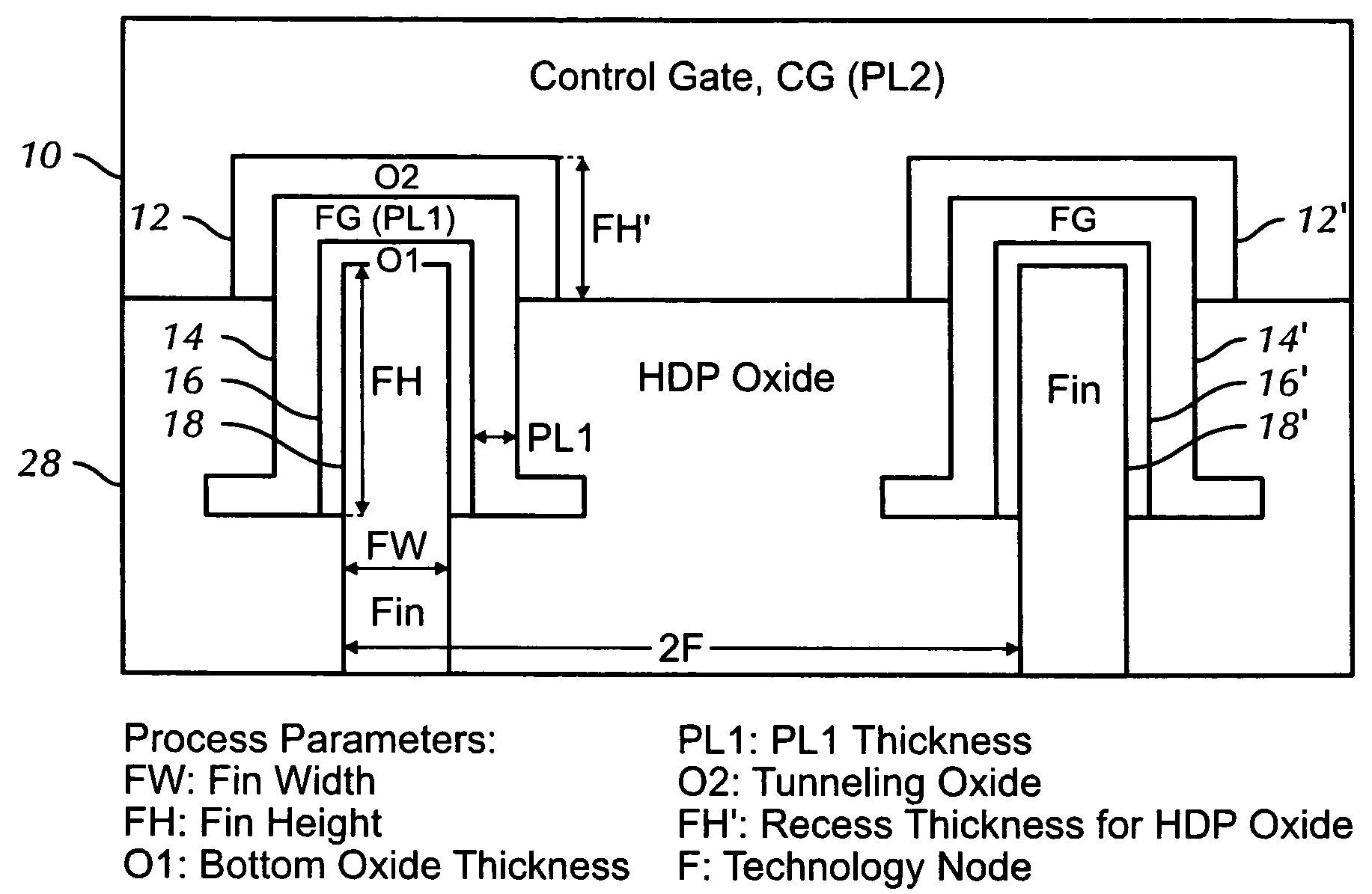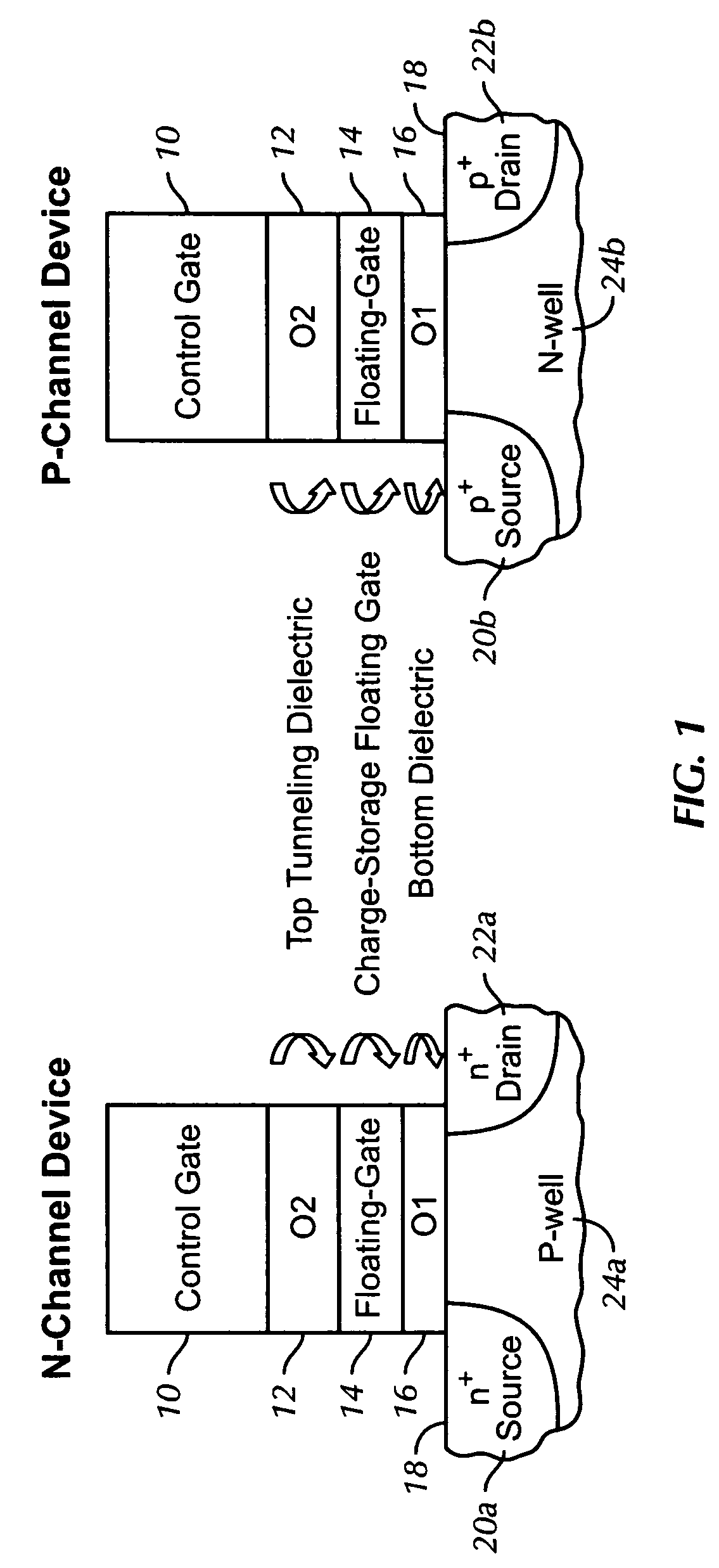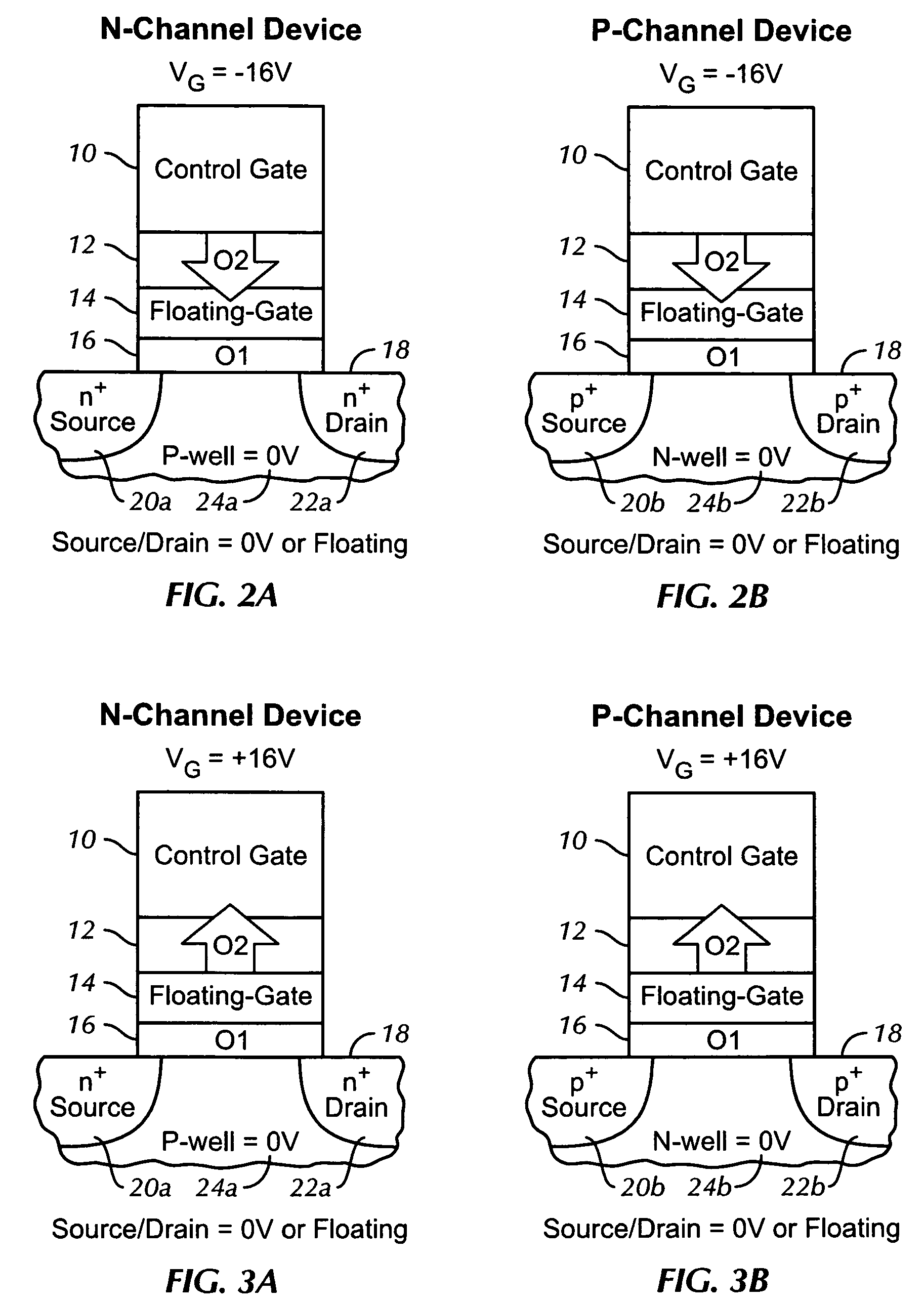Cell operation methods using gate-injection for floating gate nand flash memory
- Summary
- Abstract
- Description
- Claims
- Application Information
AI Technical Summary
Benefits of technology
Problems solved by technology
Method used
Image
Examples
Embodiment Construction
[0017]FIG. 1 shows typical cross-sectional views in the channel length direction of flash memory cells for use in embodiments of the present invention. The left diagram of FIG. 1 shows an n-Channel device. The structure contains a Si channel 18, with a p-well 24a and n-doped source 20a and drain 22a. In preferred embodiments, a bulk-tied FinFET structure is used. The structure also contains a gate oxide 16, a charge-storage floating gate 14, an inter-poly, top-tunneling dielectric 12, and a control gate 10. The right side of FIG. 1 shows a p-Channel device, which is identical to the n-Channel device, except that the Si channel 18 contains an n-well 24b, and p-doped source 20b and drain 22b.
[0018]The bottom gate oxide 16 is under relatively small electric field stress, typically less than about 7 MV / cm, during program and erase operations. This avoids any FN tunneling, which prevents much of the damage occurring in conventional flash memory devices, and allows a better DC performanc...
PUM
 Login to View More
Login to View More Abstract
Description
Claims
Application Information
 Login to View More
Login to View More - R&D
- Intellectual Property
- Life Sciences
- Materials
- Tech Scout
- Unparalleled Data Quality
- Higher Quality Content
- 60% Fewer Hallucinations
Browse by: Latest US Patents, China's latest patents, Technical Efficacy Thesaurus, Application Domain, Technology Topic, Popular Technical Reports.
© 2025 PatSnap. All rights reserved.Legal|Privacy policy|Modern Slavery Act Transparency Statement|Sitemap|About US| Contact US: help@patsnap.com



